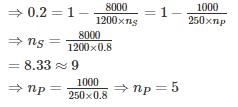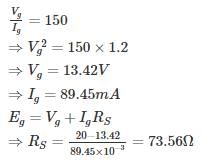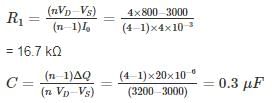Test: Power Electronics - 2 - Electrical Engineering (EE) MCQ
10 Questions MCQ Test - Test: Power Electronics - 2
Read the given statements below regarding turning – on an SCR with a gate signal.
(1) An SCR must be forward – biased.
(2) Gate pulse width must be less than the turn-on time of an SCR.
(3) Anode to cathode voltage must be more than finger voltage.
(4) The magnitude of gate current must be less than the minimum gate current required to turn – on a thyristor.
(5) The magnitude of gate current must be less than the maximum gate current allowed
Which of the above statements are false.
An SCR is rated for 700 V PIV. What is the value for which the device can be operated if the voltage safety is 2.
What should be the input voltage to turn off the SCR in the circuit shown in figure below when holding current of the SCR is 4 mA and load resistance is 4 kΩ.
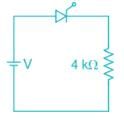
SCR with a rating of 1200 V and 250 A are available to be used in a string to handle 8 kV and 1kA. The number of parallel and series units required are respectively _____ (Take derating factor is 0.2)
An SCR has half cycle source current rating of 3000 A for 50 Hz supply. It’s one cycle surge current and I2t rating respectively are
For an SCR, the gate – cathode characteristic has a straight line slope of 150. For trigger source voltage of 20 V and allowable gate power dissipation of 1.2 watts, the gate – source resistance is _______ (in Ω)
Thyristor shown in figure below has I2t rating of 60 A2s. If terminal A gets short circuited to ground, calculate the fault clearance time so that SCR ins not damaged – (in ms)
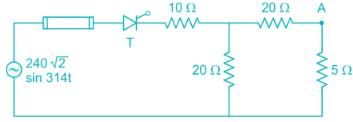
It is required to operate 200 A SCR in parallel with 300 A SCR with their respective ON – State voltage drop of 2 V and 1.2 V. calculate the value of resistance to be inserted in series with each SCR so that they share the total load of 500 A in proportional to their current ratings – (in mΩ)
Four 800 V thyristors are connected in series to share 3 kV supply voltage. The maximum forward leakage current is 4 mA, and the maximum difference in recovery charge is 20 μC.
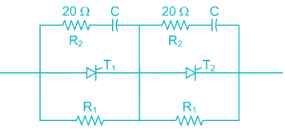
Determine the value of R1 and C (assuming equal voltage sharing).




